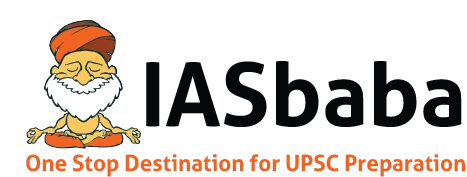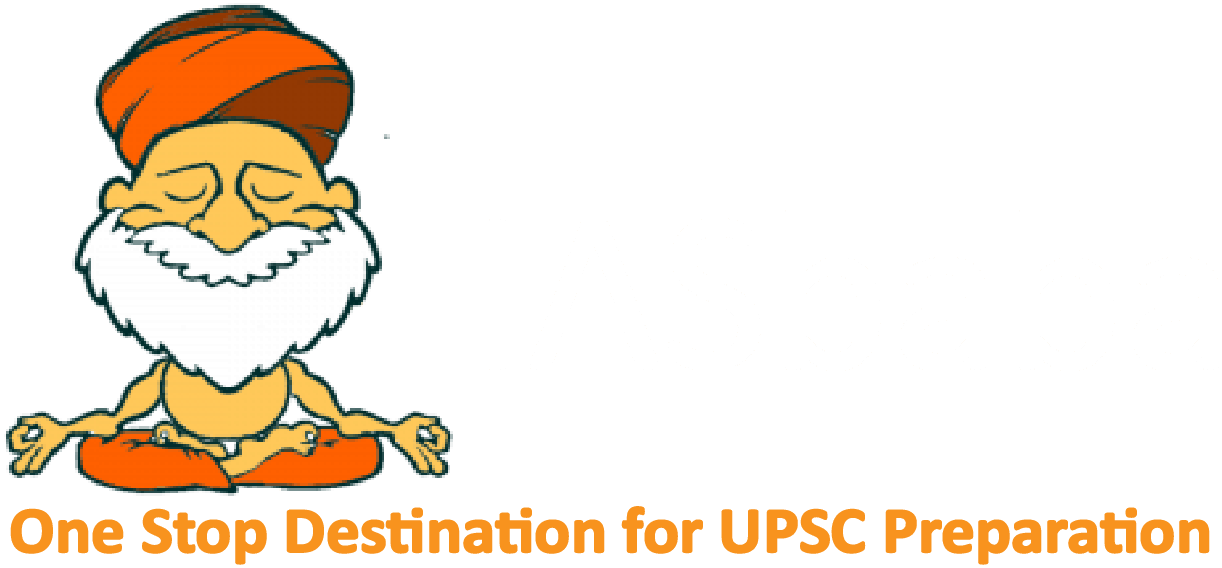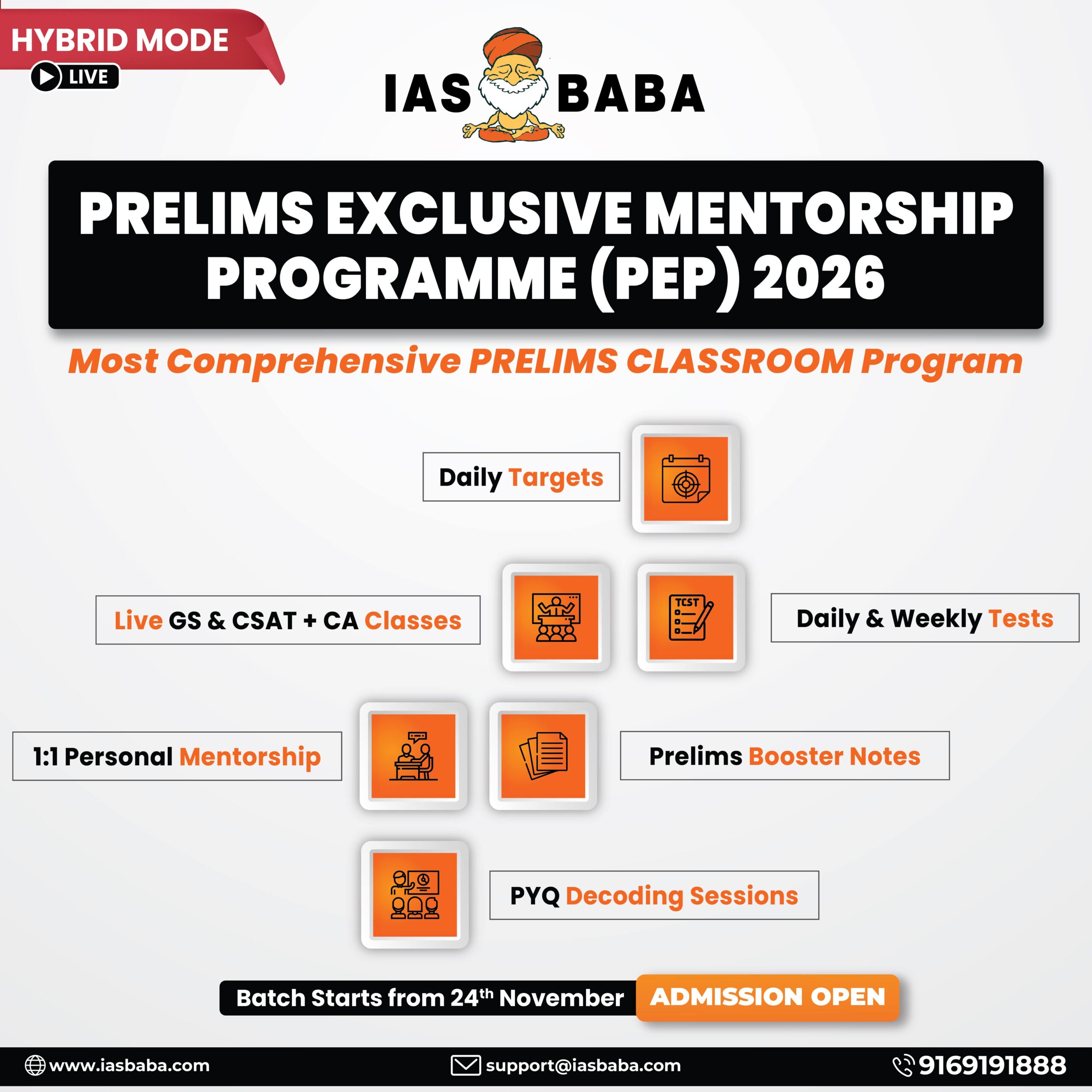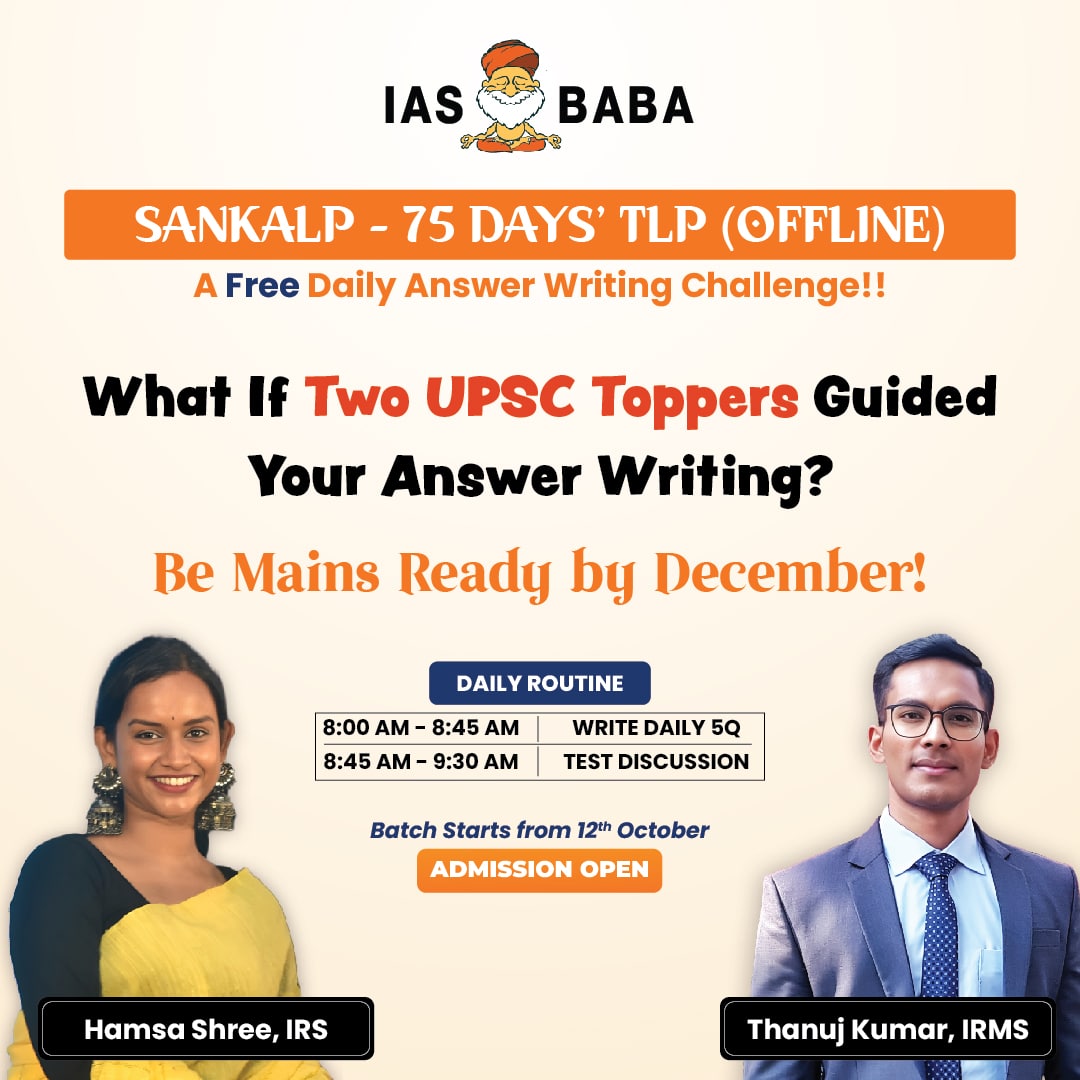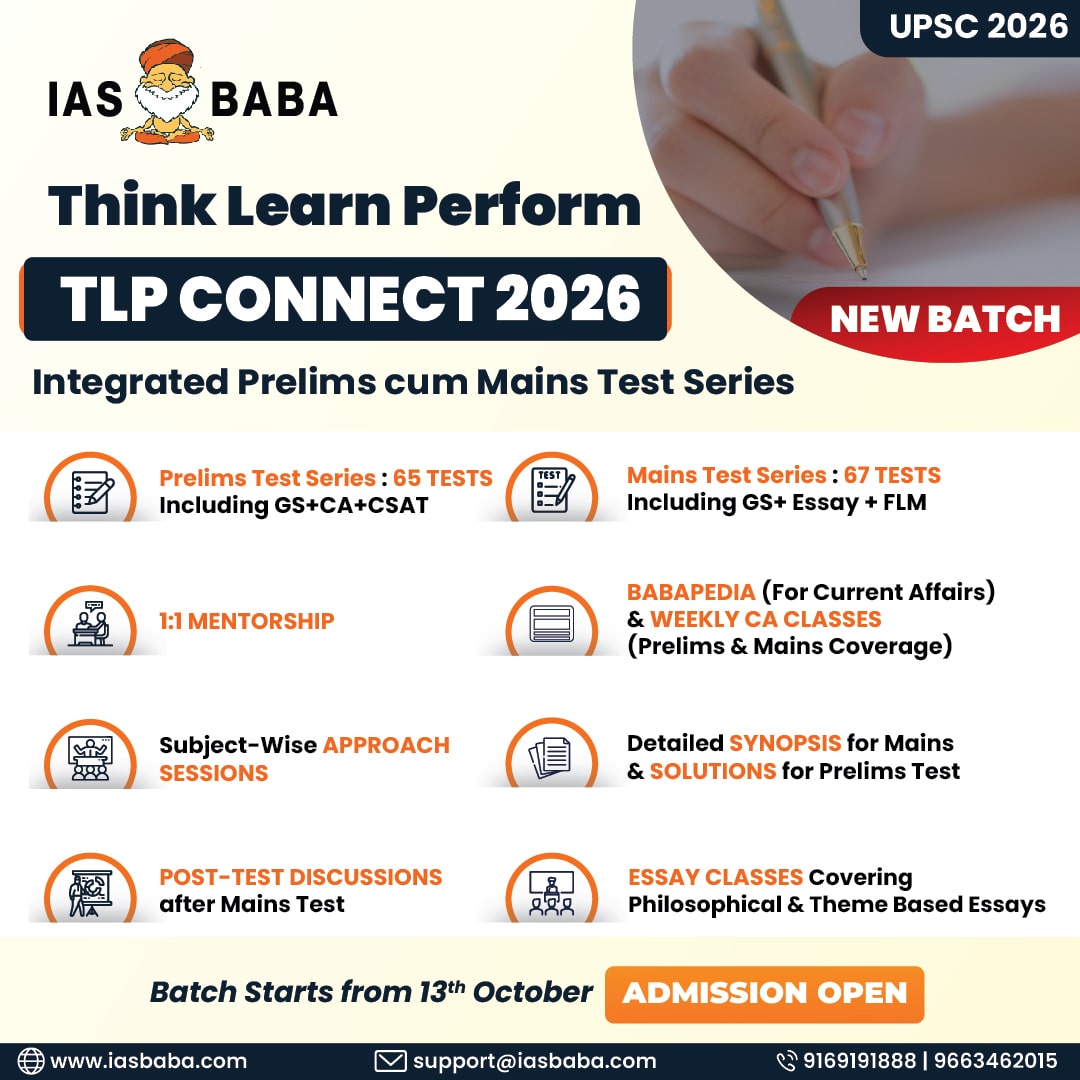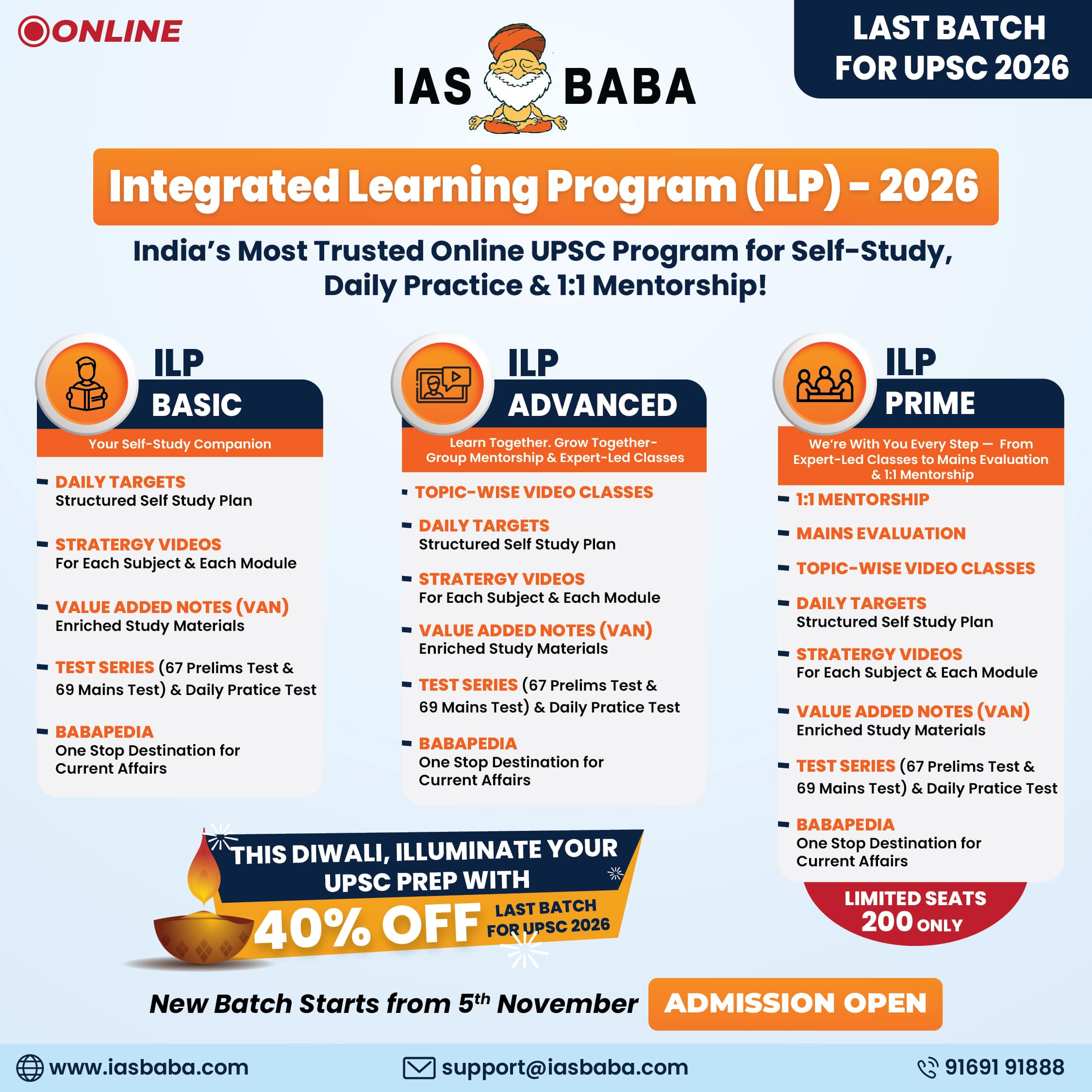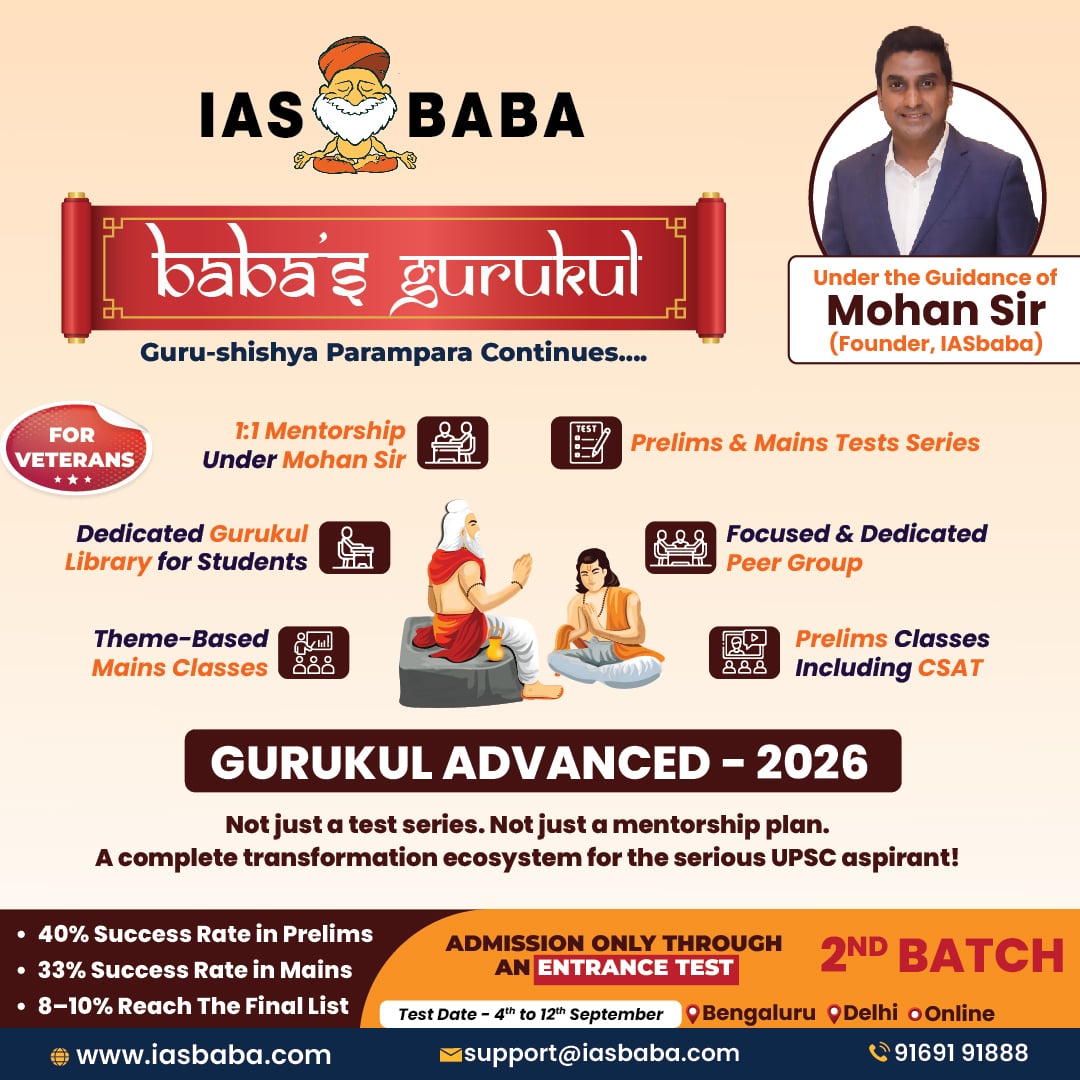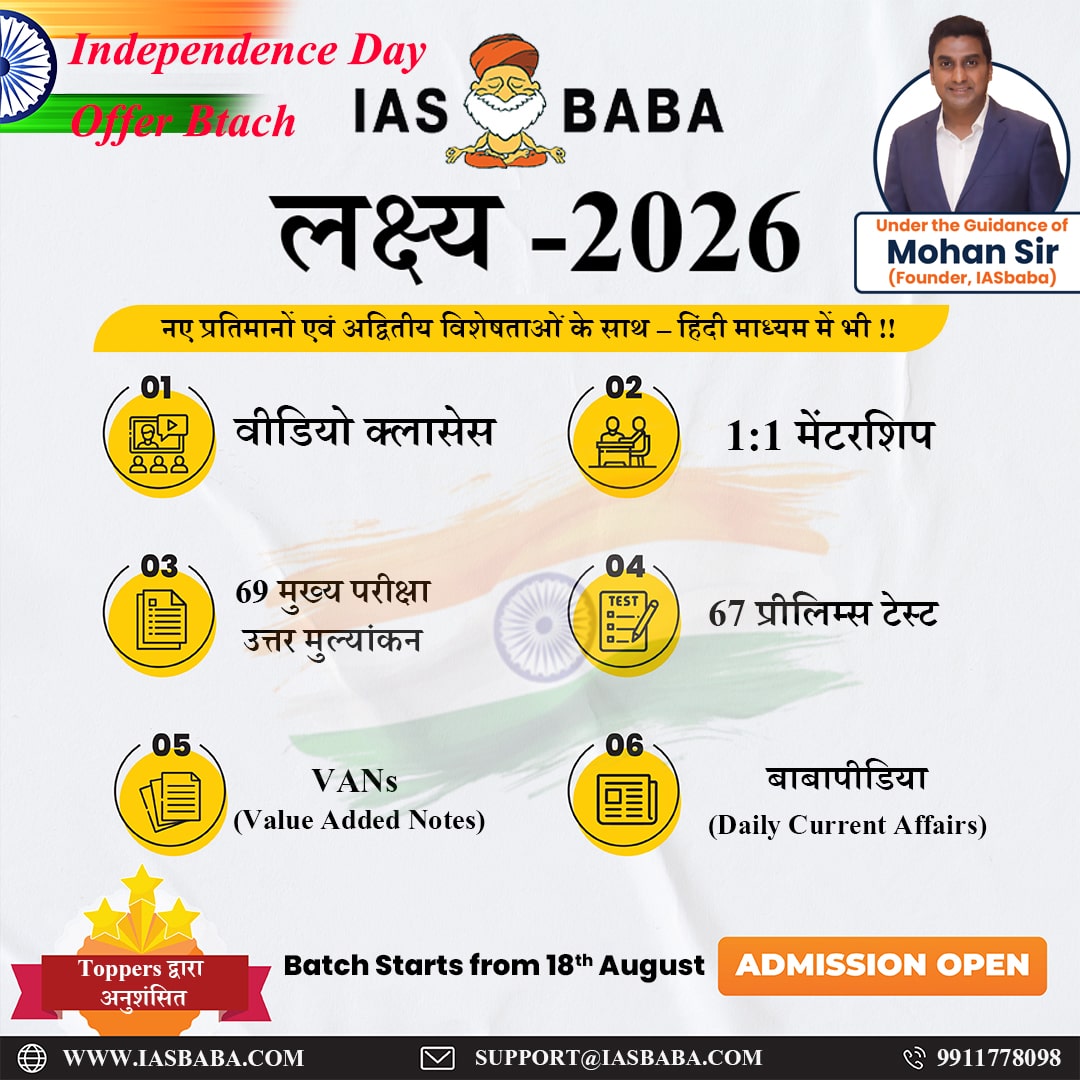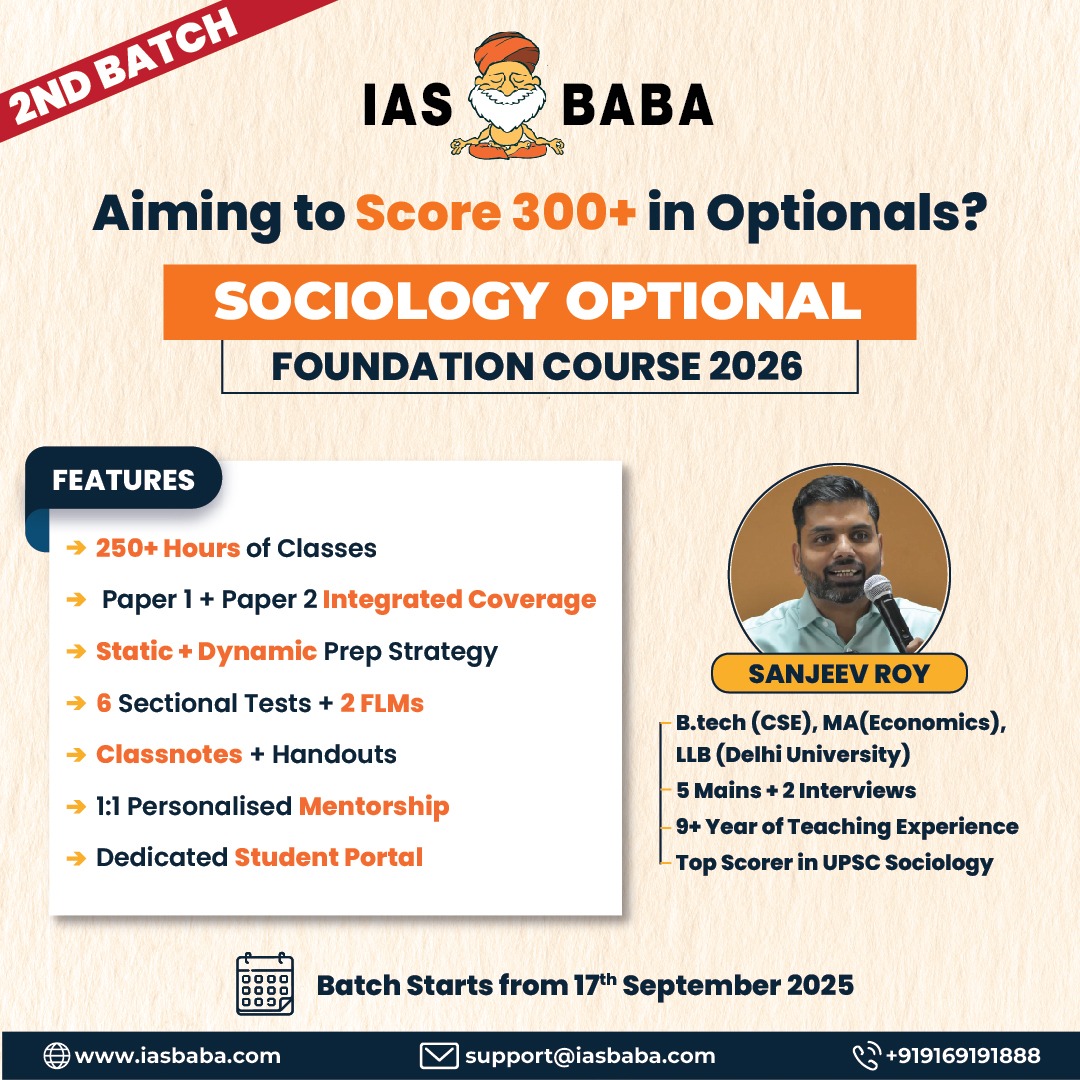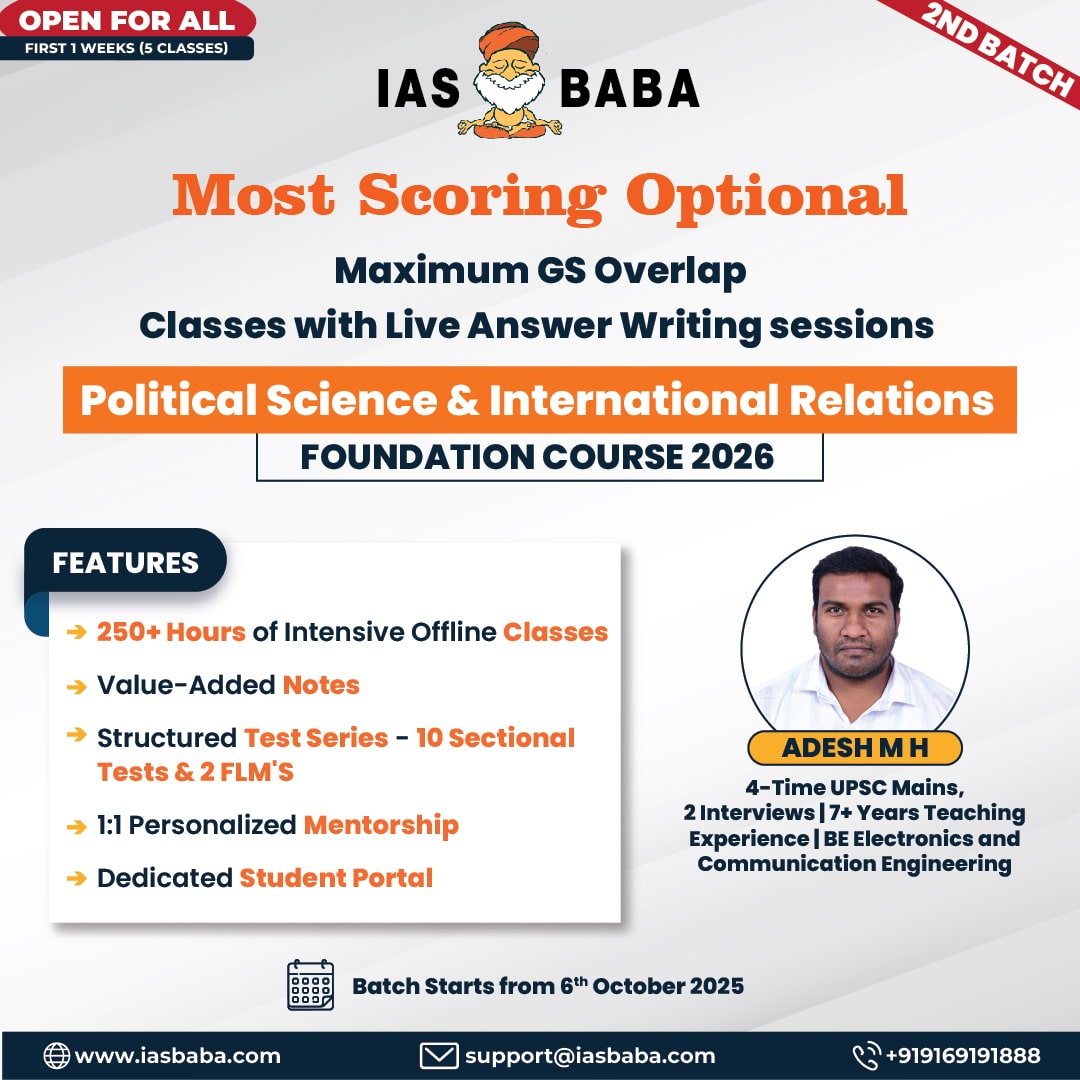IASbaba's Daily Current Affairs Analysis
Archives
(PRELIMS & MAINS Focus)
Syllabus:
Category: GEOGRAPHY
Context: The vertical lift span of the new Pamban Rail Bridge, inaugurated by Prime Minister Narendra Modi on Sunday (April 6, 2025), caused concern among senior railway officials when the lifted centre span became stuck midway as it was being lowered.
Decoding the context: For nearly a century, Pamban Rail Bridge remained the longest sea bridge in India until the Bandra-Worli Sea Link (Mumbai) came up.
Learning Corner:
- The Pamban Rail Bridge is a historic and vital railway bridge in India, connecting Rameswaram Island (Pamban Island) to the mainland in Tamil Nadu, across the Palk Strait.
- It was India’s first sea bridge, originally opened in 1914 and and was the only link to Rameswaram until a road bridge was opened in 1988.
Key Features
- Original Structure: The old Pamban Bridge was a bascule bridge, meaning it had a section that could be lifted to allow ships to pass.
- New Vertical Lift Bridge: Recently, a new Pamban Rail Bridge was inaugurated, featuring a vertical lift mechanism that allows ships to pass underneath more efficiently.
- Length: The bridge spans 2.07 kilometers across the Palk Strait.
- Engineering Marvel: The new bridge is designed to last 100 years, with stainless steel reinforcements and fully welded joints to withstand harsh marine conditions
Source : The Hindu
Syllabus:
Category: NATIONAL
Context: The seventh edition of the Khelo India Youth Games will be staged in five cities of Bihar from May 4 to 15.
Decoding the context: This edition is expected to feature over 10,000 athletes competing in more than 25 sports disciplines.
Learning Corner:
- The Khelo India Programme is a national initiative launched by the Government of India in 2018 to promote a robust sports culture at the grassroots level.
Key Components of the Khelo India Programme:
- Creation and Upgradation of Sports Infrastructure: Developing and modernizing sports facilities across the country to provide athletes with world-class training environments.
- Sports Competitions and Talent Development: Organizing events like the Khelo India Youth Games to scout and nurture young athletes.
- Promotion of Inclusiveness through Sports: Ensuring equal opportunities for women, differently-abled individuals, and other marginalized groups to participate in sports.
- Revival of Indigenous Games: Traditional Indian sports like Mallakhamba, Kalaripayattu, and Gatka are promoted.
- Major Initiatives Under Khelo India:
- Khelo India Youth Games (KIYG) – Annual multi-sport event for under-17 and under-21 athletes.
- Khelo India University Games (KIUG) – National-level competition for university students.
- Khelo India Winter Games – Held in Jammu & Kashmir and Ladakh to promote winter sports.
- Khelo India Centres – Specialized training centers for different sports.
Khelo India Youth Games (KIYG):
- The Khelo India Youth Games are an integral part of the Khelo India Programme, serving as a platform for young athletes under the age categories of 17 and 21 to showcase their talents.
- The inaugural edition was held in 2018 in New Delhi, featuring 18 sports disciplines.
- 2024 (6th Edition): Held from January 19 to 31 across four cities in Tamil Nadu—Chennai, Madurai, Trichy, and Coimbatore. The event featured 26 sports disciplines, including traditional games like Kalaripayattu and Mallakhamb.
- 2025 (Upcoming 7th Edition): Scheduled from May 4 to 15, 2025, with Bihar hosting events across five cities: Patna, Rajgir, Gaya, Bhagalpur, and Begusarai. Additionally, select disciplines such as shooting, gymnastics, and track cycling will be held in New Delhi.
Source : The Hindu
Syllabus:
Category: GOVERNMENT SCHEMES
Context:The Union Cabinet has approved phase two of the Vibrant Villages Programme (VVP) for the comprehensive development of strategic villages along all international land borders, with a total outlay of ₹6,839 crore.
Decoding the context: While VVP-I was aimed at villages along the China border, the second phase of the programme will be implemented in select strategic villages in Arunachal Pradesh, Assam, Bihar, Gujarat, Jammu and Kashmir, Ladakh, Manipur, Meghalaya, Mizoram, Nagaland, Punjab, Rajasthan, Sikkim, Tripura, Uttarakhand, Uttar Pradesh, and West Bengal, until the financial year 2028-29.
Learning Corner:
- The Vibrant Villages Programme (VVP) phase 1 was a centrally sponsored scheme launched by the Government of India in 2023 to develop border villages with sparse population, limited connectivity, and infrastructure.
- Vibrant Villages Programme -II (VVP-II) is a Central Sector Scheme (100% Centre funding), furthering its commitment for the vision of Viksit Bharat@2047 for ‘Safe, Secured & Vibrant land borders’.
- The Programme would help in the comprehensive development of the villages located in the blocks abutting international land borders (ILBs), other than the Northern border already covered under VVP-I.
- The objective of the programme is to create better living conditions and adequate livelihood opportunities to ensure prosperous and safe borders, control trans-border crime and assimilate the border population with the nation and inculcate them ‘as eyes and ears of the border guarding forces’, crucial for internal security.
- The interventions would be border-specific, state and village specific, based on Village Action Plans prepared in a collaborative approach.
Key Components:
- Infrastructure Development: Roads, housing, water supply, electricity, internet, and mobile connectivity.
- Social Development: Healthcare, education, skill development, and livelihood opportunities.
- Tourism and Cultural Promotion: Promoting local culture, traditions, and eco-tourism.
- Security Dimension: Enhances eyes and ears on the border — discouraging migration and boosting strategic presence.
- Convergence Model: Coordination among multiple central and state schemes like PMGSY, Jal Jeevan Mission, PMAY-G.
Source : The Hindu
Syllabus:
Category: POLITY
Context: President Droupadi Murmu has withheld assent to Tamil Nadu’s Bill seeking exemption from the mandate of National Eligibility-cum-Entrance Test (NEET)-based admissions for undergraduate medical courses in government medical colleges.
Decoding the context: The Tamil Nadu Admission to Undergraduate Medical Degree Courses Bill was passed unanimously in the Assembly in September 2021. After the Bill was returned by the Governor, an all-party meeting was held in February 2022. The Bill was then re-adopted in the Assembly.
Learning Corner:
- When a Bill is passed by the Legislature of a State, it is presented to the Governor for assent. In certain cases, the Governor may reserve the Bill for the consideration of the President.
Step-by-Step Legislative Process and Presidential Role
- After a state legislature passes a Bill, the Governor has 4 options under Article 200:
- Give assent to the Bill — it becomes law.
- Withhold assent — the Bill fails.
- Return the Bill (if not a money bill) for reconsideration. If passed again, must give or reserve assent.
- Reserve the Bill for the President’s consideration.
- Some situations where the Governor must or may reserve a bill for the President’s consideration:
- Bills that curtail the powers of the High Court (mandatory reservation).
- Bills Affecting Union-State Relations (Article 288 & 304) – If a state bill affects the powers of the Union Government (e.g., taxation, trade, or commerce under Article 288 or Article 304(b)), it requires Presidential assent.
- Bills on Concurrent List (Article 254(2)) – If a state bill contradicts an existing Central law on a Concurrent List (List III) subject, the President’s assent is needed to override the Central law.
- Bills Related to Certain Special Categories (Article 31A, 31C) – Bills involving compulsory acquisition of property (under Article 31A) or those implementing Directive Principles of State Policy (DPSP) overriding Fundamental Rights (Article 31C).
- President’s Powers over Reserved Bills (Article 201) – Once a Bill is reserved, the President can:
- Give assent — the Bill becomes law.
- Withhold assent — the Bill is dead.
- Return the Bill (if not a money bill) to the State Legislature with a message for reconsideration.
- If the Bill is passed again (with or without amendments), the President is not bound to give assent.
Source : Indian Express
Practice MCQs
Q1. Under which of the following circumstances is a State Bill required to be reserved for the consideration of the President of India?
- When the bill seeks to impose a tax on water or electricity consumed by the Union government.
- When the bill contradicts an existing Central law on a subject under the Concurrent List.
- When the bill aims to curtail the powers of the High Court.
- When the bill is introduced during a session of the State Legislature following Governor’s address.
Select the correct answer using the code given below:
(a) 1 and 2 only
(b) 2 and 3 only
(c) 1, 2, and 3 only
(d) 1, 3, and 4 only
Q2.Consider the following statements about the Vibrant Villages Programme:
- It is implemented by the Ministry of Defence.
- It aims to promote the development of border villages.
- The programme covers only villages along the western border.
Which of the above statements are correct?
- 2 only
B. 1 and 2 only
C. 1, 2 and 3
D. 3 only
Q3.Consider the following statements regarding the Khelo India Programme:
- It was launched in 2014 by the Ministry of Youth Affairs and Sports.
- The 2024 Khelo India Youth Games was held in Bihar.
- It includes components such as talent search, sports infrastructure, and promotion of indigenous sports.
Which of the above statements is/are correct?
A. 1 and 2 only
B. 2 and 3 only
C. 3 only
D. 1, 2 and 3
Comment the answers to the above questions in the comment section below!!
ANSWERS FOR ’ Today’s – Daily Practice MCQs’ will be updated along with tomorrow’s Daily Current Affairs
ANSWERS FOR 5th April – Daily Practice MCQs
Q.1) – d
Q.2) – b
Q.3) – b
